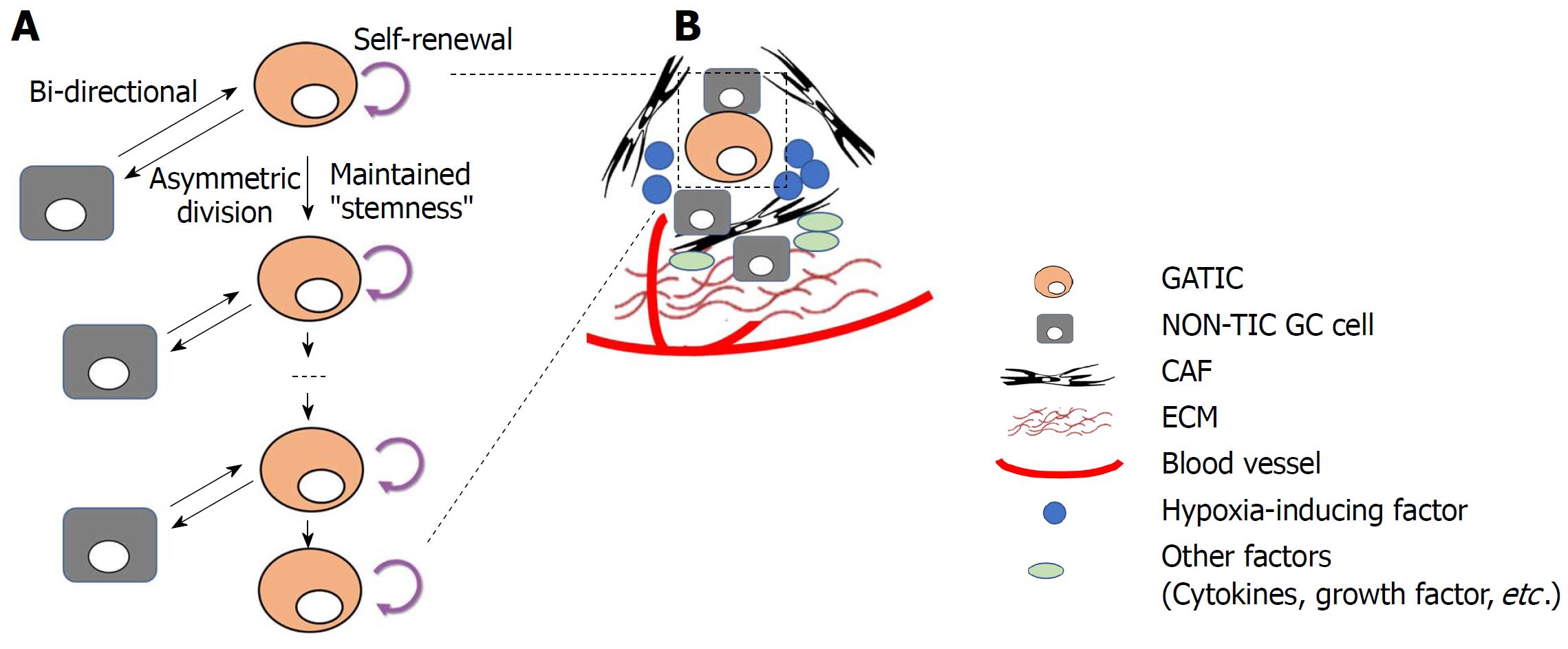Copyright
©The Author(s) 2018.
World J Gastroenterol. Jun 28, 2018; 24(24): 2567-2581
Published online Jun 28, 2018. doi: 10.3748/wjg.v24.i24.2567
Published online Jun 28, 2018. doi: 10.3748/wjg.v24.i24.2567
Figure 2 Plasticity of gastric tumor-initiating cells.
A: Gastric tumor-initiating cells (GATICs) give rise to both daughter GATICs and non-TIC gastric cancer (GC) cells (asymmetric division) while maintain their self-renewal capacity and “stemness”. Notably, recent studies demonstrate that differentiated non-TIC GC cells could undergo dedifferentiation and re-acquire the properties (or status) of GATICs. Thus, the bi-directional transition between TIC and non-TIC indicates the plasticity of GATICs, which is regulated by both genetic/epigenetic alterations and tumor microenvironmental factors; B: GATICs reside in the tumor-microenvironment, which consists of cancer cells (GATICs and non-TIC GC cells) as well as non-cancerous cells, such as cancer-associated fibroblast, extracellular matrix, blood supply, hypoxia (hypoxia-inducing factor), and other secreted factors, such as cytokines, growth factors. GATICs interact with these factors within the TIC niche, which exerts regulatory influence on the plasticity of GATICs through various signaling pathways.
- Citation: Gao JP, Xu W, Liu WT, Yan M, Zhu ZG. Tumor heterogeneity of gastric cancer: From the perspective of tumor-initiating cell. World J Gastroenterol 2018; 24(24): 2567-2581
- URL: https://www.wjgnet.com/1007-9327/full/v24/i24/2567.htm
- DOI: https://dx.doi.org/10.3748/wjg.v24.i24.2567









